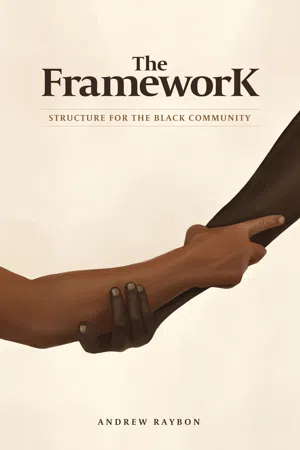![]()
Generational Gaps
There are many things to be learned by the progression of people of color from the slave trade up to and beyond the civil rights movement. So much still must be expressed and identified to truly realize the challenges that have been met and overcome in a centuries-long process. To assess the progress of people of color, particularly African Americans, is to translate all these experiences into a series of lessons to deepen our understanding of our collective experience. To condense this overarching lesson into smaller, more manageable portions for the purposes of this conversation, the crux of the focus will be from the mid to late 1900s.
The work of our forefathers, through many different agendas, has been monumental to the successes we now see as a people. This includes, but is not limited to, the civil rights movement and the endeavors and establishment of the Nation of Islam as well as the Black Panther Party. Although the agendas and movements of the aforementioned organizations are all separate and include a diverse cast of individuals and backgrounds, the commonality reveals itself in the betterment of the black community.
The Nation of Islam, for example, advocated for the spiritual, mental, social, and economic condition of the Negro. Much can be said about this religious movement, but its overarching purpose was to give a voice to the voiceless. This purpose cannot be minimized, and the ideas brought forth are still relevant to this day. The leaders and martyrs of this group remain brilliant even by today’s standards; in fact, their brilliance may exceed today’s standards.
Consider the work of the Honorable Minister Farrakhan, for example, and like-minded individuals such as Nuri Muhammad. Minister Farrakhan’s wisdom and insight on the plight of the black community is truly second to none, and it would not have been far-fetched for him and others to have chosen to only advocate for the followers within their organizations. Instead, regardless of the variations between religious thoughts or personal conduct, a core foundation of this institution was, and likely still is, to better the predicament of people of color. This is the epitome of what our approach should be. At the same time, we will not always agree on every specific detail or about every endeavor. What should remain constant, however, is the collective goal to better and further our people.
In my next example, the civil rights movement largely sought to combat racial discrimination, disenfranchisement, and racial segregation. Much is already known about this movement and the key figures associated with it, such as Dr. Martin Luther King Jr. and US Representative John Lewis. Their leadership in various capacities was vital to success and the consistent effort to push for civil rights and liberties. The point I want to highlight in this context is that this particular generation had leadership, and the leaders were able to create momentum and shape it into a larger agenda. Again, this was an organization or movement that was assembled with a particular outcome in mind. The methodology in reaching this end goal was carefully considered and sought.
It is also worth mentioning that the civil rights movement preceded the Black Power movement. Given the context of the times in the aftermath of the fight for civil rights, which was a peaceful and nonviolent movement, the demand for social justice became much more aggressive compared to previous endeavors. Even still, during this time, activists founded black-owned businesses and created services for themselves, and this became part of the larger social network that could be used as a blueprint for something we should aim for today.
Last, but certainly not least, the Black Panther Party was, among many things, responsible for addressing the needs of black communities on a range of issues, some of which included food injustices, healthcare disparities, and educational deficiencies.
The takeaway from these short and concise examples, which in no way are a comprehensive retelling of each of their individual endeavors, is that Generation X (1961-1980) was a particularly active generation for the black community. I would be remiss if I did not state that in many ways this is an oversimplification of comprehensive movements, organizations, and institutions. Nevertheless, the intent behind the specifically targeted areas of each case have been outlined as a means to identify a recurring theme. Regardless of how one feels about these movements, they all had agendas, they all took a collective stance on the issues of the time, and their environment consistently required them to do so. Given the benefit of hindsight, these are a few well-known examples of black people coming together for the collective benefit of the group as a means of survival. To translate this collective benefit into a modern-day context, we, in many different and expansive ways, have much more freedom. Unity is not necessarily required or sought in the same way it once was.
It is interesting to assess how all of this relates to the condition we find ourselves in today. Some people believe that there was no unified effort to address social injustices between the time of the civil rights movement and the emergence of the Black Lives Matter movement. Along those lines, I would give credence to the Million Man March, which was again something advocated by the Nation of Islam. Still, in its totality, I would not argue that there has been a gap in unified efforts for social justice.
It is, however, disheartening to realize that I am among the members of Generation Y (1981-1995), otherwise known as Millennials, and the credit for much of the Black Lives Matter movement is given to those of Generation Z (1996-2012). After initially digesting this information, it forced me to ask myself what happened to my generation and where was our presence? There are many conclusions to be drawn from this, and again...
